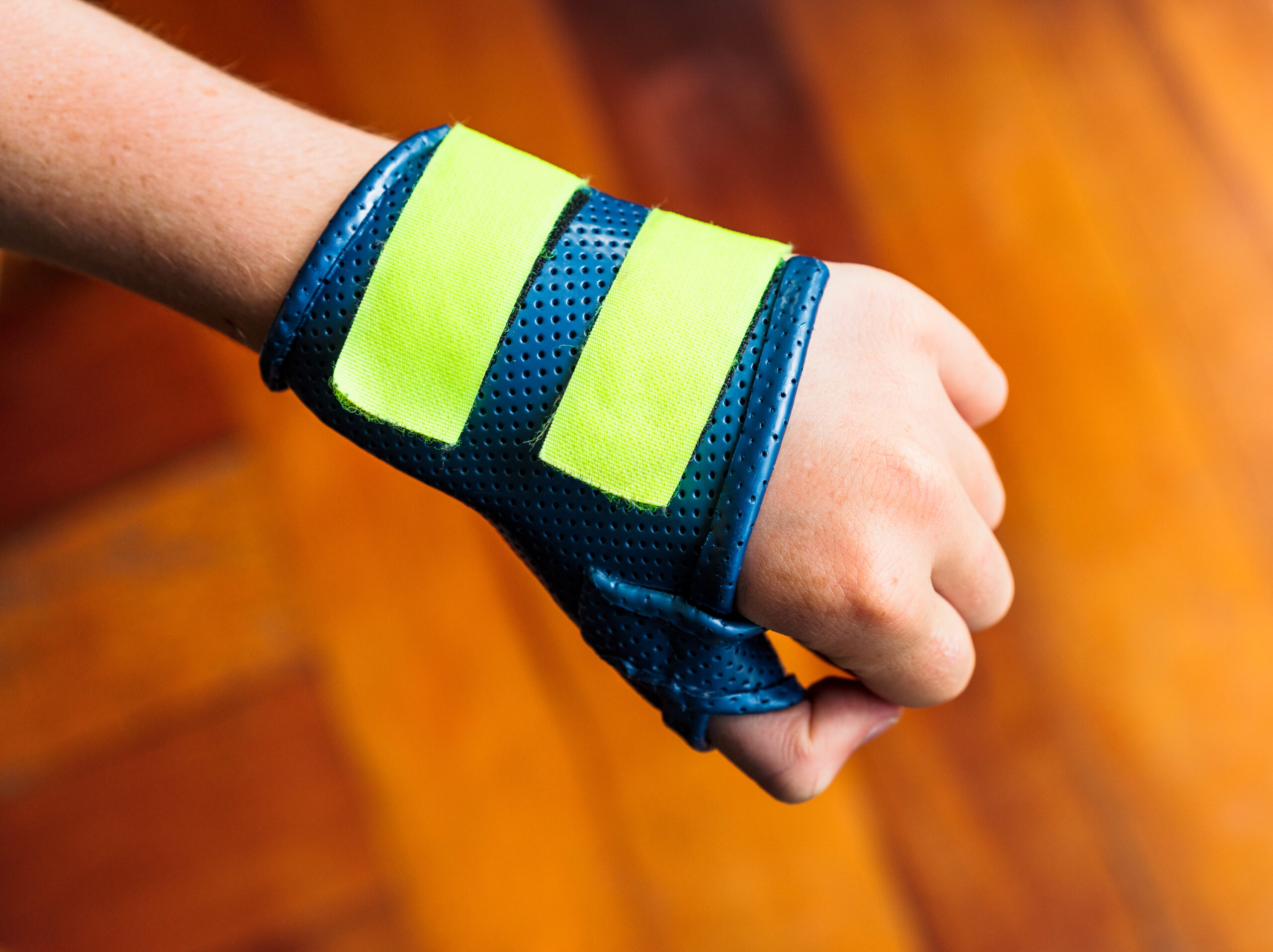Home | Specialties | Occupational Therapy | Custom Orthoses/Splints
What is a Custom Orthosis/Splint?
A custom orthosis is a device that is custom-made to fit a person’s specific body part and provide support, immobilization, protection, or correction of a limb or joint. It is fabricated from a 3-dimensional model or cast unique to the individual’s anatomy, rather than mass-produced in standard sizes and shapes. The exact specifications of the materials, dimensions, placements of joints/straps/pads, and biomechanical features are tailored to the individual and their particular needs.

When Are Custom Splints Needed?
One of our occupational therapists will evaluate the patient’s condition, functional goals, and needs when determining if a custom device is required versus an off-the-shelf option. A custom orthosis or splint may be recommended for an occupational therapy patient in the following situations:
- To provide extra support, immobilization, or protection for an injured or weak body part. For example, a wrist splint after a fracture or sprain, or a custom hand orthosis for someone with arthritis, nerve damage, or muscle weakness affecting their hand function.
- To help prevent or correct a physical deformity or contracture. For example, a custom splint helps stretch tight muscles in the hand or wrist and allows for an increased range of motion.
- To improve a person’s ability to perform activities of daily living and function more independently. For example, a custom feeding splint for someone with poor grasp to allow them to hold utensils and cups.
- To support the achievement of therapy goals related to increasing strength, control, or range of motion. The custom fit allows the specific problem area to be well-targeted.
- To optimize comfort and durability when a “one size fits all” or off-the-shelf splint/orthosis does not properly fit or meet the patient’s unique needs.
- When prolonged daily wear is expected, a custom splint or orthosis is often better tolerated and optimizes compliance compared to a standard pre-fabricated one.
Where Can They Be Used?
Custom orthoses can potentially be made for the hand, wrist, and upper extremities to stabilize the area and support a quick recovery.
Hand and Wrist
Custom hand/wrist orthoses like splits and braces can support conditions like arthritis, strokes, injuries, neurological conditions, or burns. They allow function while providing joint stabilization or stretching tight muscles.
Elbow
Elbow orthotics can be custom-made after trauma or surgery to protect the joint while still permitting mobility. They reduce strain on healing tissues.
Shoulder
Custom shoulder orthoses improve function and decrease pain from instability, repetitive strain, arthritis, and post-op rehabilitation. They enhance joint alignment and take pressure off damaged structures.
What To Expect
Evaluation and Assessment
The occupational therapist conducts a thorough evaluation of the patient’s hand or upper extremity condition. This assessment includes identifying the underlying diagnosis, understanding the client’s specific functional limitations and goals, and assessing the range of motion, strength, and sensation in the affected hand or limb.
Prescription and Collaboration
If necessary, the occupational therapist collaborates with the client’s physician or referring healthcare provider to obtain a prescription for the custom orthosis or splint. This prescription includes specific details about the type of orthosis required and the intended treatment goals.
Measurements and Mold Making
The therapist takes precise measurements of the client’s hand or limb to ensure a proper fit. In some cases, the therapist may use molding techniques to create a cast or mold of the affected area, which serves as a blueprint for custom orthosis/splint fabrication.
Orthosis Design and Fabrication
Using the assessment findings and measurements, the occupational therapist designs the custom orthosis or splint tailored to the client’s needs. The orthosis is often made from various materials, such as thermoplastic or neoprene, which can be molded to fit the client’s hand comfortably and provide the necessary support.
Fitting and Adjustment
Once the orthosis/splint is fabricated, the therapist fits it to the client’s hand or limb, ensuring proper alignment and comfort. The therapist may make adjustments as needed to optimize the fit and function of the orthosis.
Education and Training
The therapist educates the client on how to use and care for the custom orthosis/splint properly. This includes information on wearing schedules, hygiene, and any exercises or activities to perform while wearing the orthosis.
Functional Training
The therapist provides functional training to the client to ensure proper use of the orthosis during daily activities. This training helps the client integrate the orthosis into their routines and promotes optimal function.
Monitoring and Follow-up
The therapist regularly monitors the client’s progress, reassesses the orthosis’s fit and function, and makes any necessary adjustments or modifications to meet the client’s changing needs.
Gradual Weaning
As the client’s condition improves, the therapist may gradually reduce the use of the orthosis, ensuring that the client’s hand or limb can safely support itself without reliance on the orthosis.
Ongoing Support
The occupational therapist provides ongoing support and guidance to the client throughout the entire orthotic treatment process, addressing any concerns or issues that may arise.
Benefits of Custom Orthoses
Customizing a splint for the individual greatly optimizes rehabilitative outcomes in many situations. Some of the main benefits of using a custom-made orthosis include:
- Better fit
- Targeted control/immobilization
- Accommodates deformities
- More comfortable for the wearer
- Improved stability and tighter fit enhance a patient’s capability to use the affected limb
- Durability & adjustability
- Provides unique solutions for various conditions
